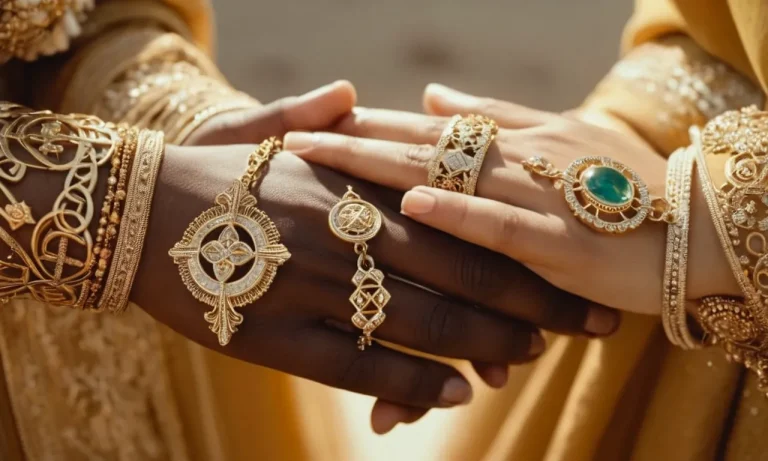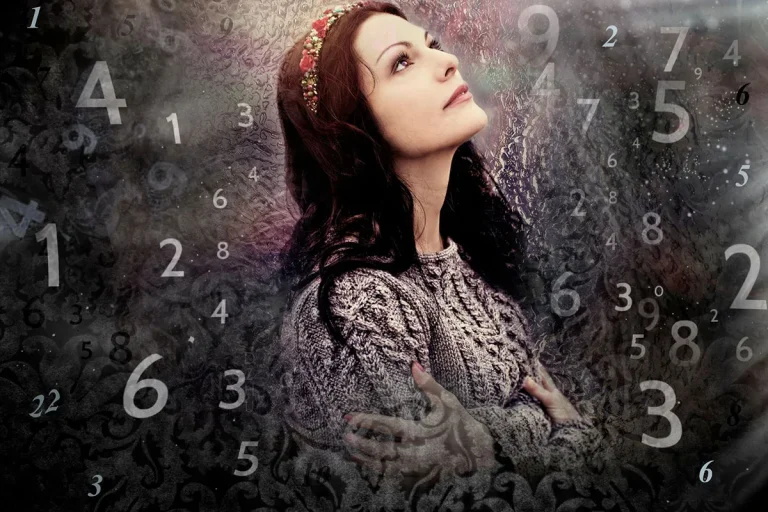The candy cane, with its distinctive red and white stripes and peppermint flavor, has become an iconic symbol and treat during the Christmas season. But did you know that candy canes are actually thought to have spiritual meaning and rich symbolism behind those sweet stripes?
If you’re wondering about the significance behind these festive, hook-shaped candies, here’s the essence: candy canes represent the purity, sacrifice, and shepherd’s crook of Jesus Christ.
In this comprehensive guide, we’ll explore the captivating history and evolving traditions behind candy canes at Christmas. We’ll uncover the powerful symbolism linked to their colors, shape and the legend of a candymaker who created the first candy canes as Christmas gifts.
Here’s a delicious look at the untold story of why we hang candy canes on trees and fill stockings with these striped sweets every holiday season.
The Origin and History Behind Candy Canes
The Legend of the Candy Cane’s Invention
According to popular legend, in 1670, a German choirmaster was seeking a way to quiet noisy children during church services. He asked a local candy maker to create sugar sticks that would act as a reward and distraction.
The candy maker made a long, white stick from sugar and bent it to resemble a shepherd’s staff. The choirmaster then gave his young singers these candy “shepherd hooks” to keep them occupied.
Candy Canes Started as Straight, White Sticks
While the exact origin is unclear, records show candy canes first appearing around the 17th century in Europe. These early candies were straight, white sticks and did not yet have stripes or the curve shape. It wasn’t until the mid-1800s that candy canes with red stripes started showing up.
Switzerland and Germany were among the first places they appeared.
When Candy Canes First Bent
The bending of the candy cane into its familiar curved shape is often credited to German-Swedish candy maker August Imgard in the 19th century. However, the first documented candy cane that was both striped and bent was not produced until around the early 20th century in America.
The Meaning Behind the Red and White Stripes
The red stripes were meant to represent Christ’s sacrifice and suffering. The white symbolized his purity and the Christian faith. Candy makers also incorporated three small red stripes into the design, which were believed to represent the Holy Trinity.
The peppermint flavor itself was meant to represent the hyssop plant that was used for purifying in the Bible (Exodus 12:22).
Candy Cane Symbolism and Spiritual Meaning
The Shepherd’s Crook Shape Points to Jesus
The curved shape of the candy cane is often said to symbolize a shepherd’s crook. Just as a shepherd will use his crook to guide and rescue his sheep, Christians believe Jesus guides and rescues his followers, acting as the “Good Shepherd” (John 10:11).
The candy cane’s crook shape can remind believers of Christ’s role as shepherd and protector.
The Peppermint Flavor Represents Purity and Sacrifice
Peppermint flavoring is known for being fresh and clean-tasting. This purity of flavor is said to represent the sinless nature of Jesus. The minty aroma can also remind Christians of the sacrifice of Christ, as myrrh (an ingredient of peppermint flavoring) was brought by the Wise Men to honor the newborn Jesus (Matthew 2:11).
The Bold Red Stripe Symbolizes Christ’s Blood and Sacrifice
The vibrant red stripe on candy canes is often compared to stripes a shepherd might paint on his crook. However, in Christian symbolism, the bold red stripe is commonly said to represent the blood Jesus shed when he died on the cross for mankind’s sins.
The stripe’s location, fully covering one side of the candy cane, points to the fullness of Christ’s atoning sacrifice (Romans 5:8-11).
The Thin White Stripes Signify God’s Holiness and the Virgin Birth
The narrow white stripes on candy canes are said to embody the holiness, sinlessness, and purity of God. They can also represent the virgin birth of Jesus, who was conceived in Mary by the power of the Holy Spirit (Luke 1:34-35).
Like the delicate stripes themselves, the nature of Christ’s virgin birth defies common understanding but speaks to the sinless perfection of the Father.
The Hard Candy Holds Deep Religious Imagery
The solid hardness of candy canes is sometimes compared to the firm foundation of the Christian Church. It can also symbolize the promises of God, which believers can cling to just as a candy cane is clung to.
Additionally, the rock candy form is seen as a reflection of the solid rock of ages (Psalm 18:2) who is Jesus Christ. As creative symbols, candy canes act as meaningful reminders of the hope Christians have in their Savior.
| Candy Cane Feature | Spiritual Meaning |
|---|---|
| Crook shape | Jesus as the Good Shepherd |
| Peppermint flavor | Purity and sacrifice of Christ |
| Bold red stripe | The blood Jesus shed for sins |
| Thin white stripes | Holiness, virgin birth of Jesus |
| Hard candy form | Firm foundation of faith |
So whether viewed as a festive treat or as a visual message of hope, candy canes act as unintended Christian symbols year after year. Their seasonally sweet form hides layer upon layer of deeper spiritual meaning.
Candy Cane Traditions, Customs, and Uses Today
Hanging Them on Christmas Trees
Candy canes are omnipresent on Christmas trees, with their iconic red-and-white-striped design brightly complementing colorful lights and ornaments. Over 90% of Americans hang candy canes on their Christmas trees, according to a 2022 survey by Nielsen.
The peppermint treat has become deeply intertwined with evergreen decor. Its curved shape is also convenient for hooking onto branches.
Stirring Warm Drinks
The peppermint flavor of candy canes makes them ideal for stirring steaming mugs of hot chocolate, coffee, or apple cider. Letting a candy cane dissolve slowly infuses the drink with sweet minty notes. Clinking a hooked candy cane on the rim of a mug before sipping is also a fun custom.
Using candy canes as festive stirrers dates back over a century.
Filling Stockings
Finding a few candy canes tucked inside Christmas stockings is a cherished tradition for both children and adults. Over 80% of people reported getting candy canes in their stockings as kids, a 2019 Harris Poll revealed.
Their small size makes these striped candies perfect as part of the little gifts, toys, and treats that fill holiday stockings hung by the chimney with care.
Ornamental Decorations
The classic shape of candy canes makes them decorative for embellishing gingerbread houses, wreaths, centerpieces, and other Christmas decor. Their bright red and white stripes and glittery sheen look festive on mantels or strung along bannisters.
Candy cane ornaments are also popular for hanging on small trees or gifting as sweet holiday keepsakes.
Edible Treats
| Over | 1.76 billion |
| candy canes are produced in the U.S. annually as of 2022, according to the National Confectioners Association. Whether traditional peppermint or in flavors like cherry, lemon, or chocolate, these striped candies are a signature Christmas treat for nibbling, using in candy recipes, or creatively embellishing baked goods.
Their appeal transcends generations. |
Candy canes wonderfully symbolize the sweet joy of Christmas in their histories, flavors, shapes, and ubiquitous presence during the holiday season. Cherished traditions have cemented candy canes as iconic symbols characteristic of Yuletide celebrations for over a century and counting.
The Enduring Popularity of Candy Canes
Mass Production and Candy Innovations
Since their invention in the mid-1800s, candy canes have grown immensely in popularity, thanks in part to mass production innovations in the early 20th century. Candy companies began producing candy canes on a much larger scale using machines that automated tasks like twisting and bending the stripes.
This allowed the price of candy canes to drop, making them more affordable and accessible to the general public.
The mass production of candy canes also led to new flavor experiments like chocolate-dipped, rainbow-striped, and sparkly candy canes throughout the 1900s. Candy makers recognized the public’s desire for novelty and variety, bringing exciting updates to a nostalgic holiday favorite. According to the National Confectioners Association, over 1.76 billion candy canes are made each holiday season in contemporary times.
New Flavors and Variations
Beyond appearances, many candy companies now offer candy canes in flavors ranging from fruits to sweets like:
- Cherry
- Grape
- Bubblegum
- Cotton Candy
- Peppermint
The flavor innovations tap into consumers’ preferences for novelty while still evoking sweet holiday memories. Additionally, candy canes now come in all shapes and sizes like loops, subtler stripes, spirals, and filled designs.
Featured Across Pop Culture
Given their strong associations with Christmas and winter imagery, candy canes frequently appear as symbols and icons across popular media like movies, songs, art, and literature. Their signature red-and-white striped design evokes visual shorthand for the holiday season. 🎅🏼🎄
Some fun examples of candy canes featured in pop culture include the Candy Cane Forrest from the 1964 movie Rudolph the Red-Nosed Reindeer, references in Christmas songs like “Peppermint Candy Cane”, and even an art installation made of giant candy canes in Chicago’s Millennium Park.
Still the Top-Selling Christmas Candy
| Rank | Candy Type | Est. Sales for 2022 Holiday Season |
|---|---|---|
| #1 | Candy Canes | $352 million |
| #2 | Chocolate Santas | $341 million |
To read more about the history and symbolism of candy canes, check out: History of Candy Canes
Conclusion
With their captivating history, symbolic Christian connections, sweet peppermint flavor and cheerful, curved shape, it’s easy to see why candy canes remain a beloved Christmas tradition century after century.
Whether hung on trees, stirred into cups of cocoa, or filling stockings year after year, candy canes are here to stay.
The next time you enjoy one of those red-and-white striped candies, remember the legendary candymaker who created that first sweet cane to be a Christmas gift and symbol of Jesus. Let the minty flavor remind you of sacrificial love and allow their form to kindle hope – the promise that we have a Good Shepherd watching over us, one Christmas and all year through.






